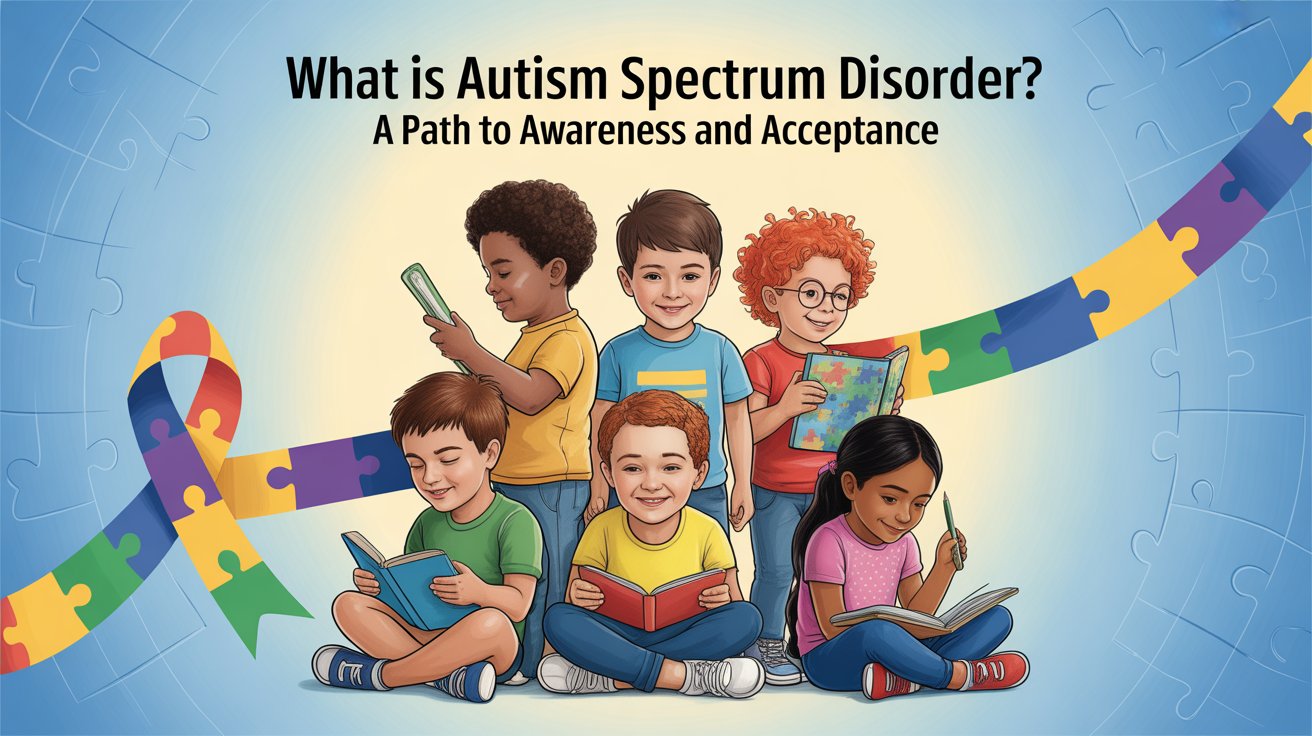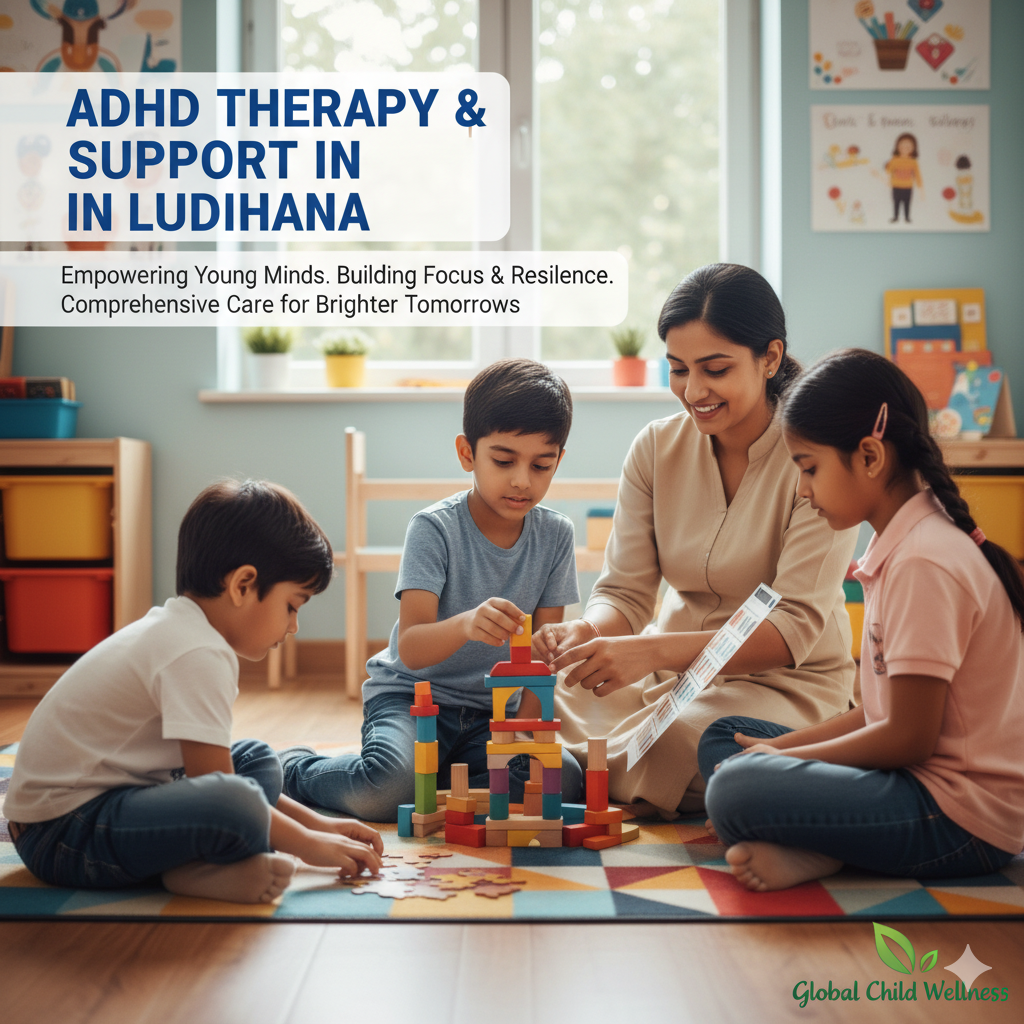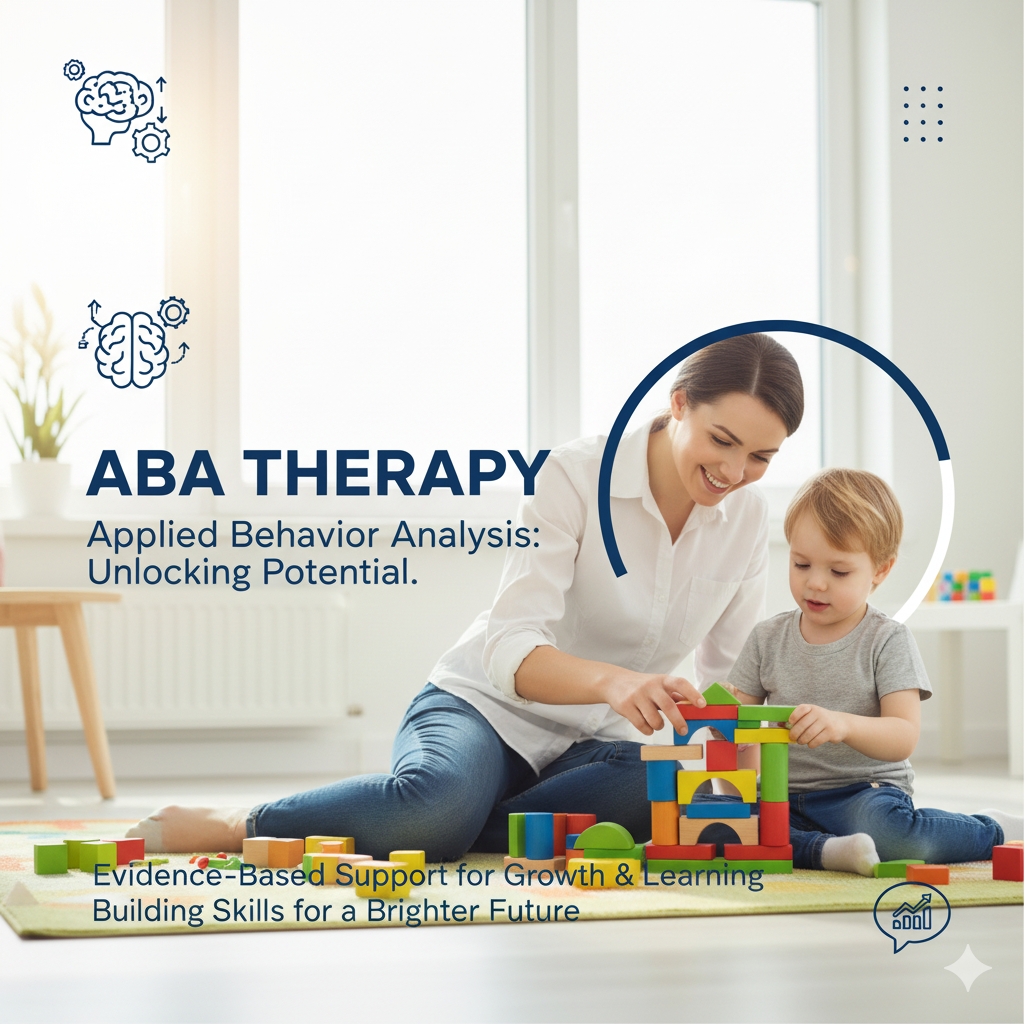What Is Autism Spectrum Disorder? A Path to Awareness and Acceptance
Autism Spectrum Disorder (ASD) is a complex developmental condition that affects individuals in unique ways, influencing their social interactions, communication, and behavior. As the prevalence of autism continues to rise, understanding this multifaceted disorder has never been more crucial. Many still hold misconceptions about ASD, creating barriers that hinder acceptance and support for those on the spectrum and their families. This article aims to illuminate the nuances of autism, offering insights that foster greater awareness and empathy. By exploring the characteristics of ASD, the challenges faced by individuals, and the importance of inclusive communities, we can pave the way for a more accepting society. Together, let’s embark on a journey to understand autism better and celebrate the diversity it brings to our world. Join us in discovering how awareness can transform lives, promote inclusion, and ultimately lead to a brighter future for everyone.
Understanding Autism Spectrum Disorder (ASD)
Autism Spectrum Disorder (ASD) is a developmental condition that manifests in a wide range of symptoms and abilities, making each individual’s experience unique. ASD primarily affects social interaction, communication, and behavior, with the severity and combination of these manifestations varying across the spectrum. Individuals with autism may have exceptional skills in certain areas while facing significant challenges in others. This variability underscores the importance of recognizing autism as a spectrum rather than a one-size-fits-all diagnosis.
The understanding of ASD has evolved significantly over the years. Historically, autism was often misunderstood and misdiagnosed, leading to stigmatization and isolation of those affected. Modern research and advocacy have helped shift perceptions, highlighting the importance of early intervention and tailored support. By acknowledging the diverse presentations of autism, we can better appreciate the strengths and challenges that come with the disorder, fostering a more inclusive environment for all.
Central to understanding ASD is the recognition that it is not a disease to be cured but a condition to be understood and accommodated. This perspective shift is crucial in promoting acceptance and providing meaningful support to individuals on the spectrum. Awareness and education are key to dismantling the barriers that prevent those with autism from reaching their full potential. Through continued learning and empathy, society can move towards a more inclusive and supportive approach to autism.
Signs and Symptoms of Autism
Identifying the signs and symptoms of autism early can lead to timely interventions that significantly improve outcomes. Autism typically presents in early childhood, though the specific symptoms and their severity can vary widely. Common early signs include difficulties with social interactions, such as avoiding eye contact, not responding to their name, and a lack of interest in peer relationships. Children with autism may also exhibit repetitive behaviors, such as hand-flapping, rocking, or insistence on routines.
Communication challenges are another hallmark of autism. Some individuals may have delayed speech development, while others might use language in unusual ways, such as speaking in a monotone voice or repeating phrases (echolalia). Non-verbal communication can also be affected, with difficulties in understanding gestures, facial expressions, and body language. These communication barriers can lead to frustration and social isolation if not properly addressed.
Sensory sensitivities are also common in individuals with autism. They may be hypersensitive or hyposensitive to sensory stimuli, such as sounds, lights, textures, and smells. For instance, a loud noise that might be merely annoying to a neurotypical person could be overwhelming and distressing for someone with autism. Understanding these sensory differences is crucial for creating supportive environments that reduce stress and enhance comfort for individuals on the spectrum.
The Importance of Early Diagnosis in Autism
Early diagnosis of autism is critical in providing children and their families with the resources and support needed to navigate the challenges associated with the disorder. When autism is identified in the early stages of development, interventions can be implemented that significantly enhance the child’s social, communicative, and adaptive skills. These interventions often include speech therapy, occupational therapy, and behavioral strategies tailored to the child’s specific needs.
The benefits of early diagnosis extend beyond individual development. Families gain access to a network of support, including educational resources, support groups, and professional guidance. Early awareness allows parents and caregivers to better understand their child’s unique needs and strengths, fostering a more nurturing and responsive home environment. This proactive approach can mitigate the frustration and confusion that often accompany undiagnosed or late-diagnosed autism.
Moreover, early diagnosis can help in addressing co-occurring conditions that are common in individuals with autism, such as anxiety, attention-deficit/hyperactivity disorder (ADHD), and gastrointestinal issues. Addressing these conditions in conjunction with autism can improve the overall quality of life for the individual. It is essential for healthcare professionals, educators, and parents to be vigilant in recognizing the early signs of autism and to take prompt action to ensure comprehensive evaluations and appropriate interventions.
The Different Types of Autism Spectrum Disorders
Autism Spectrum Disorder encompasses a range of subtypes, each presenting with distinct characteristics and levels of support needs. Prior to the consolidation of diagnostic criteria under the term ASD, various subtypes were recognized, including Asperger’s Syndrome, Pervasive Developmental Disorder-Not Otherwise Specified (PDD-NOS), and Autistic Disorder. Although these distinctions are no longer used in the Diagnostic and Statistical Manual of Mental Disorders (DSM-5), understanding these variations can still provide valuable insights into the diverse presentations of autism.
Asperger’s Syndrome, for instance, is often associated with individuals who have average to above-average intelligence and do not experience significant delays in language development. People with Asperger’s may, however, face substantial challenges in social interactions and exhibit restricted, repetitive patterns of behavior and interests. Many individuals with Asperger’s possess strong verbal skills and may excel in specific areas of interest, yet struggle with understanding social nuances.
PDD-NOS was a diagnosis given to individuals who exhibited some but not all of the classic symptoms of autism or who had milder symptoms. This category highlighted the spectrum nature of autism, acknowledging that not all individuals fit neatly into the more defined categories of autistic disorder or Asperger’s Syndrome. The broad criteria for PDD-NOS underscored the need for a flexible approach to diagnosis and intervention, tailored to the unique needs of each individual.
The consolidation of these subtypes into a single diagnosis of ASD aims to provide a more comprehensive and inclusive understanding of autism. This approach emphasizes the continuum of symptoms and support needs, encouraging a more personalized and holistic approach to treatment and support. By recognizing the varied presentations of autism, healthcare professionals and caregivers can better address the individual needs and strengths of those on the spectrum.
Common Myths and Misconceptions about Autism
Despite increased awareness and understanding of autism, several myths and misconceptions persist, contributing to stigma and misunderstanding. One prevalent myth is that individuals with autism lack empathy. In reality, many people with autism experience deep emotions and care deeply about others but may express their feelings differently. Difficulties in interpreting social cues can sometimes be mistaken for a lack of empathy, but this does not reflect the individual’s true capacity for understanding and compassion.
Another common misconception is that autism is caused by vaccines. This myth has been thoroughly debunked by extensive scientific research, which has found no credible evidence linking vaccines to autism. The persistence of this myth can lead to harmful consequences, such as vaccine hesitancy and the resurgence of preventable diseases. It is crucial to rely on reputable scientific sources for information about autism and its causes to avoid perpetuating misinformation.
There is also a misconception that all individuals with autism have intellectual disabilities. While some people with autism may have co-occurring intellectual disabilities, many others have average or above-average intelligence. Autism affects individuals differently, and cognitive abilities can vary widely across the spectrum. Recognizing the diverse capabilities of people with autism is essential in promoting an inclusive and supportive society that values each individual’s unique contributions.
The Role of Genetics and Environment in ASD
The development of Autism Spectrum Disorder is influenced by a complex interplay of genetic and environmental factors. Research has identified numerous genes associated with autism, suggesting a strong genetic component. These genes can affect brain development and function, leading to the diverse range of symptoms seen in autism. However, no single gene causes autism; rather, it is the result of multiple genetic variations interacting with one another.
Environmental factors also play a role in the development of autism, particularly during prenatal and early postnatal periods. Factors such as advanced parental age, prenatal exposure to certain medications or environmental toxins, and complications during birth have been associated with an increased risk of autism. Additionally, maternal health and nutrition during pregnancy can influence the likelihood of a child developing autism. It is important to note that these environmental factors do not cause autism on their own but may interact with genetic predispositions to increase risk.
Understanding the genetic and environmental influences on autism is essential for developing more effective interventions and supports. Ongoing research aims to unravel the complex mechanisms underlying autism, which could lead to better diagnostic tools, personalized treatments, and preventive strategies. By advancing our knowledge of the causes of autism, we can improve the lives of individuals on the spectrum and their families.
Strategies for Supporting Individuals with Autism
Supporting individuals with autism requires a multifaceted approach that addresses their unique needs and strengths. One effective strategy is the implementation of individualized education plans (IEPs) in school settings. IEPs are tailored to the specific learning needs of the student, incorporating accommodations and modifications that facilitate their academic and social success. These plans often involve a team of educators, therapists, and parents working collaboratively to set goals and monitor progress.
Therapeutic interventions, such as speech therapy, occupational therapy, and behavioral therapy, play a crucial role in supporting individuals with autism. Speech therapy can help improve communication skills, both verbal and non-verbal, while occupational therapy focuses on enhancing daily living skills and sensory integration. Behavioral therapy, such as Applied Behavior Analysis (ABA), can help individuals develop positive behaviors and reduce challenging ones. These therapies are most effective when started early and tailored to the individual’s needs.
Creating supportive environments at home and in the community is also essential. Families can benefit from learning about autism and adopting strategies that promote understanding and acceptance. This includes using clear and consistent communication, establishing predictable routines, and providing opportunities for social interaction and sensory regulation. Communities can enhance support by offering inclusive programs and services, as well as fostering awareness and acceptance through education and advocacy.
The Impact of Autism on Families and Relationships
The diagnosis of autism can profoundly impact families and relationships, bringing both challenges and opportunities for growth. Parents and caregivers often experience a range of emotions, from anxiety and grief to determination and hope. The demands of caring for a child with autism can be significant, requiring time, energy, and resources. This can lead to increased stress and strain on family dynamics, particularly if support systems are lacking.
Siblings of individuals with autism may also face unique challenges. They might feel neglected or take on caregiving roles, which can affect their own social and emotional development. Open communication and support are crucial in helping siblings understand and cope with their brother or sister’s condition. Family therapy and support groups can provide valuable spaces for sharing experiences and gaining insights into managing the complexities of autism within the family context.
Despite these challenges, many families find that navigating autism strengthens their relationships and fosters resilience. The journey can bring families closer together as they work collaboratively to support their loved one with autism. It also provides opportunities to celebrate small victories and develop a deeper appreciation for the individual’s unique qualities. By accessing support and resources, families can more effectively manage the impact of autism and build strong, supportive relationships.
Advocacy and Awareness: Promoting Acceptance
Advocacy and awareness are pivotal in promoting acceptance and inclusion for individuals with autism. Effective advocacy involves raising public awareness about autism, challenging misconceptions, and advocating for policies and practices that support the rights and needs of people on the spectrum. This can be achieved through community outreach, education campaigns, and partnerships with organizations dedicated to autism advocacy.
One of the key goals of advocacy is to create inclusive environments where individuals with autism can thrive. This includes promoting inclusive education, employment opportunities, and accessible public spaces. Employers can play a significant role by adopting inclusive hiring practices and providing workplace accommodations that support the unique strengths and needs of employees with autism. Educational institutions can implement inclusive teaching strategies and foster a culture of acceptance and respect.
Awareness campaigns are essential in fostering understanding and empathy within the broader community. By sharing stories and experiences of individuals with autism, these campaigns can humanize the condition and highlight the contributions of people on the spectrum. Social media, public events, and collaborations with media outlets are powerful tools in spreading awareness and encouraging positive attitudes towards autism. Increased awareness leads to greater acceptance, reducing stigma and creating a more supportive and inclusive society.
Resources for Further Learning and Support
For individuals and families seeking to learn more about autism and access support, numerous resources are available. Organizations such as the Autism Society, Autism Speaks, and the National Autistic Society offer a wealth of information, including educational materials, support services, and advocacy initiatives. These organizations provide valuable guidance on understanding autism, accessing interventions, and navigating the challenges associated with the disorder.
Online communities and support groups can also be a valuable source of support and connection. Platforms like Facebook, Reddit, and specialized autism forums offer spaces for individuals and families to share experiences, seek advice, and find camaraderie with others who understand their journey. These communities can provide emotional support, practical tips, and a sense of belonging, helping to alleviate feelings of isolation.
Educational resources, including books, articles, and online courses, can further enhance understanding of autism. Books like “The Reason I Jump” by Naoki Higashida and “Thinking in Pictures” by Temple Grandin provide personal insights into the experiences of individuals with autism. Online courses and webinars offered by universities and professional organizations can deepen knowledge of autism and effective support strategies. By engaging with these resources, individuals and families can empower themselves with the information and tools needed to navigate life with autism.
In conclusion, Autism Spectrum Disorder is a complex and multifaceted condition that requires a nuanced understanding and compassionate approach. By increasing awareness, challenging misconceptions, and promoting acceptance, we can create a more inclusive and supportive society for individuals with autism and their families. Through education, advocacy, and community support, we can celebrate the diversity that autism brings and work towards a brighter future for all.







